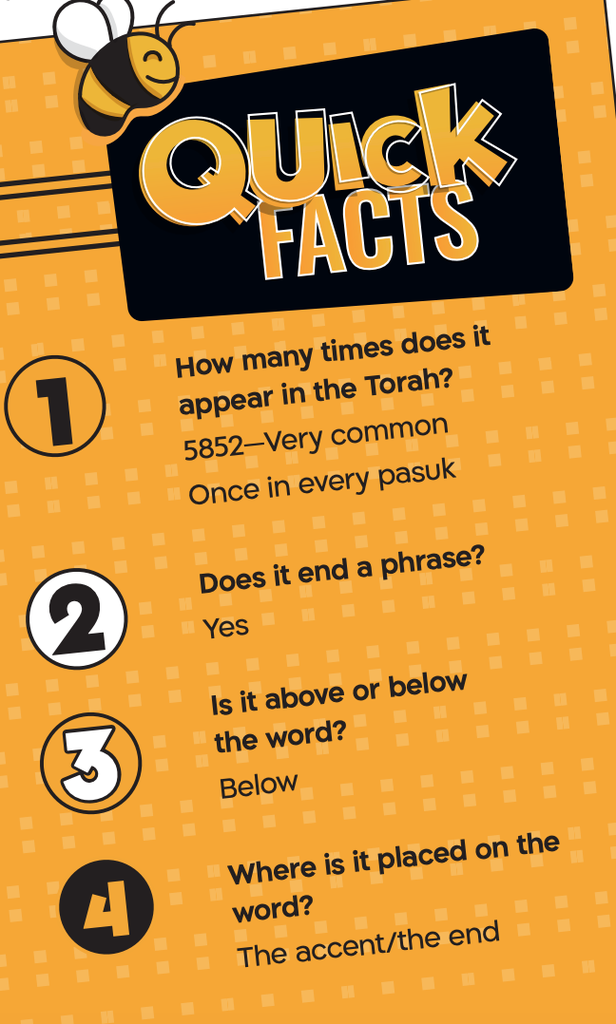Illustration Credit: Elad Lifshitz, Dov Abramson Studio


Sof Pasuk is a very common note in the Torah—it appears in every single verse! That’s because it ends the verse and tells you where it stops. In some ways, it is the most important note. Remember, the Torah is written without vowels or stops, so you can’t know where the verses end just by looking at a Torah scroll. That’s the job of sof pasuk.
It has two parts—a vertical line that marks the accent of the final word in the sentence, and two dots that follow the end of the word. Usually, a bunch of other notes lead into the sof pasuk, but a few times (34 to be exact), it appears all on its own, immediately following an etnahtah (see last week). Our parashah has two examples of this:
וְהַמְּלָאכָ֗ה הָיְתָ֥ה דַיָּ֛ם לְכׇל־הַמְּלָאכָ֖ה לַעֲשׂ֣וֹת אֹתָ֑הּ וְהוֹתֵֽר׃
their efforts had been more than enough for all the tasks to be done.
וּשְׁנֵ֤י קְרָשִׁים֙ עָשָׂ֔ה לִמְקֻצְעֹ֖ת הַמִּשְׁכָּ֑ן בַּיַּרְכָתָֽיִם׃
and they made two planks for the corners of the Tabernacle at the rear.
Can you count up the total number of verses in this week’s parashah?

-------------------
-------------------





